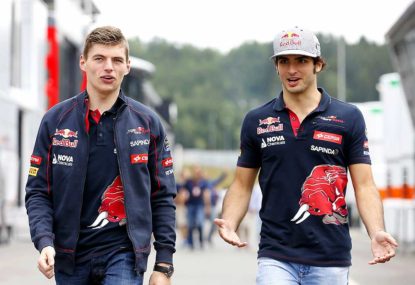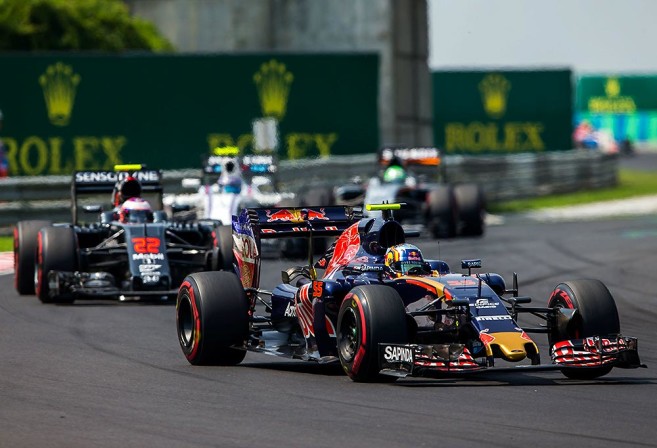'P---es me off': Ricciardo fuming over rival's response to crash that ended his Chinese GP
Ricciardo was forced to retire after the Aston Martin driver slammed into the back of his car during a safety car restart but Stroll…

Toro Rosso has morphed from backmarkers to credible midfielders throughout its 12 seasons on the grid, yet the primary purpose of its existence has never been as dubious as it is presently.
Red Bull’s junior outfit currently resembles the Formula One equivalent of purgatory.
Barring an about face, Red Bull will field their incumbent line-up, comprising Daniel Ricciardo and Max Verstappen, in 2018, while Carlos Sainz and Daniil Kvyat are contracted to return with Toro Rosso.
Red Bull recently exercised its option on Spaniard Sainz through 2019, by which time he will be 25. If he is elevated for the season in question, he will become the eldest member of its Young Driver Academy to graduate to the senior squad on a full-time basis, which partially explains recent efforts to extract himself from his commitment.
Financial incentive undoubtedly drove Red Bull to activate the extension, as is its prerogative, thus Sainz will be forced to stump up a considerable fortune if he wishes to compete elsewhere next season.
Red Bull team principal Christian Horner reasons “something that has a value has to have a price attached to it”. While open to entertaining an offer, Horner emphasised the requirement to “have a significant value attached to it, because we have invested in Carlos significantly”.
Reports tied Sainz to Jolyon Palmer’s tenuous seat at Renault, yet confirmation that Robert Kubica will test for the Enstone outfit following this weekend’s Hungarian Grand Prix leaves him facing an unprecedented fourth campaign at Toro Rosso.
Viable alternatives appear limited, certainly not to the extent which vindicates a separation requiring the monetary compensation on the scale Horner suggests, thus it isn’t a straightforward case of signing a cheque and each party heading their respective ways.

(Photo by Peter Fox/Getty Images)
Whether firstly a suitor presents itself, and secondly whether the Spaniard is compelled to absorb the financial sacrifice to unshackle himself from servitude is beside the point. It stands to reason that Toro Rosso represents a means to an end. Historical precedent suggests that if progression to Red Bull hasn’t been made in swift fashion, long-term prospects nosedive, as though some form of damaged goods.
Rather than being a Helmut Marko project driver, Verstappen took his services to Toro Rosso in 2015 with the caveat of a race seat, while Kvyat was demoted to the former’s benefit in acrimonious circumstances little over 12 months later. The Russian’s options following his enforced retreat to the team he debuted with in 2014 aren’t in abundance, ostensibly being retained for commercial purposes having underwhelmed in contrast to Sainz.
It can be argued that Toro Rosso served its purpose many times over with Sebastian Vettel’s rise to four consecutive titles, having granted the Faenza outfit its solitary victory at the 2008 Italian Grand Prix, though little other material reason to justify its ongoing presence has become apparent.
There’s no denying they boast one of the most aesthetically pleasing liveries on the grid, yet it belies the reality that they’re in Formula One for the wrong reasons.
They would be served better in the hands of a fresh investor which can use it to genuinely advance their cause. If suggestion that beleaguered Honda is weighing up factory status is accurate, they should look no further.
Toro Rosso aren’t making up the numbers, even so, the holding pattern which has been established defeats the purpose of the exercise. Numerous talents are beholden to a perpetually evolving all or nothing final destination while bearing the obligation to deliver consistently in mediocre machinery.